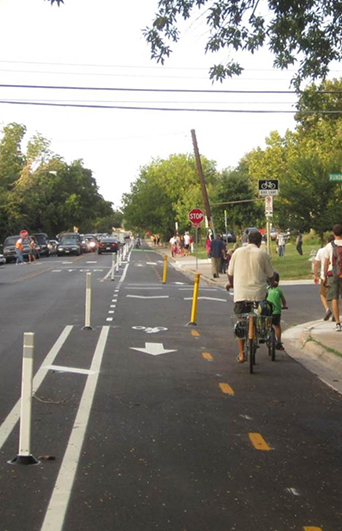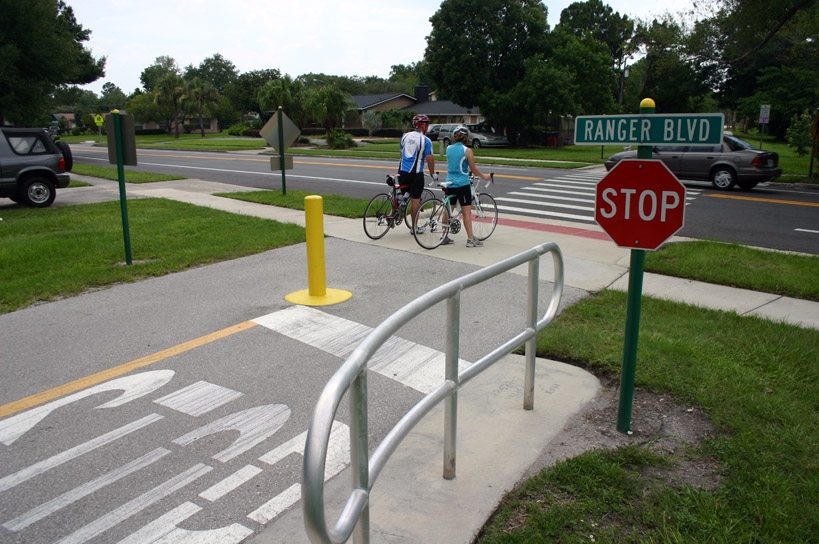
A complete street is safe, comfortable, and convenient for all modes of travel, automobile, foot, bicycle, and transit. A complete streets policy ensures that the entire right of way is planned, designed, and operated to provide safe access and mobility for all users. A Complete Streets approach integrates people and place in the planning, design, construction, operation, and maintenance of our transportation networks. This helps to ensure streets are safe for people of all ages and abilities, balance the needs of different modes, and support local land uses, economies, cultures, and natural environments.
A Complete Streets policy directs a transportation agency to consider the needs of current and future users when designing a new road or resurfacing or reconstructing an existing road. Agencies examine land use, transportation networks, community growth patterns, stakeholder input, and other policy goals to determine how driving, transit, walking, and bicycling should be accommodated. Context Sensitive Solutions is compatible with complete streets policies. Both approaches rely on an interdisciplinary process to identify shared values, common goals, and stakeholder responsibilities.
The US DOT and Federal transportation legislation has for many years encouraged recipients of Federal-aid project funding to consider and plan for the needs of all users. The United States Department of Transportation Policy Statement on Bicycle and Pedestrian Accommodation Regulations and Recommendations, issued March 2010, promotes complete streets concepts by directing recipients of Federal-aid project funding to value well-connected walking and bicycling networks as strategy for improving a community’s livability.
Developing Complete Street designs for low-volume, low-speed streets (e.g. under 20,000 AADT and speed limits under 35 mph) may require minimal formal performance trade-off analyses. However, as one approaches or exceeds these limits the feasibility of incorporating Complete Street design principles may become more challenging. The Performance-Based Practical Design process with TSMO (Transportation Systems Management and Operations) elements gives planners and designers the tools to develop strategies that can test a range of feasible application for Complete Street concepts. (From Applying Performance-Based Practical Design Methods to Complete Streets: A Primer on Employing Performance-Based Practical Design and Transportation Systems Management and Operations to Enhance the Design of Complete Streets).
Resources:
